As the world’s climate becomes hotter and drier, water conservation is becoming more and more important.
The summer of 2022 saw temperatures over 40°Celsius (140° Fahrenheit) being recorded for the first time in the UK!
Gardening can be one of the main household uses of water, so we gardeners need to start to think about ways to adapt to these changing conditions.
So if you have asked the question “How Can I Save Water In My Garden?” then read on for answers and ideas.
- Install A Water Butt (Or Several!)
- Plant Drought Loving Varieties Of Flowers And Shrubs.
- Use “Grey” Water
- Water In The Morning
- Check The Weather Forecast
- Mulch
- Grow Your Lawn
- Use Edging For Borders
- Don’t Use A Sprinkler
- Use Vermiculite Or Perlite In Containers
Install A Water Butt (Or Several!)
This is one of the best ways to conserve water in countries that have a wet season and a dry season.
So much water can be saved by trapping and keeping the rainfall of the wetter months, and then using it in the dry months.
This water is FREE, and better for your plants than tap water!
Water butts can be set up to capture run-off from roofs using guttering and drainpipes.
This could be from your house, your garage or your greenhouse.
You can also even just set up a container in your garden, such as a barrel or sink (just make sure no wildlife can fall in). You can then dip your watering can in and use this water to irrigate your garden.
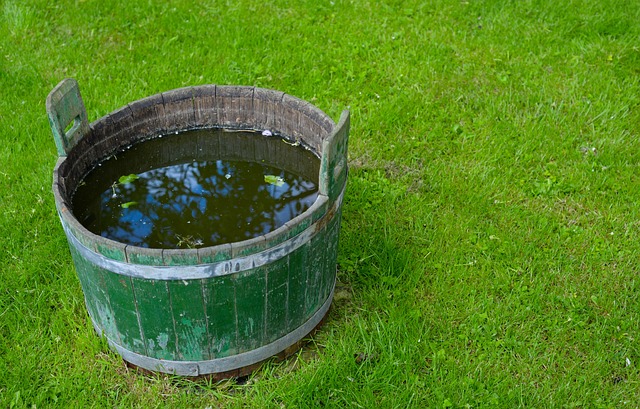
Plant Drought Loving Varieties Of Flowers And Shrubs.
By planting flowers and shrubs that don’t mind warm and dry conditions, not only are you future-proofing your garden and cutting down on work, you can also ensure colour and coverage in your borders through the summer.
This year I discovered Salvias, and completely fell in love with them – they are still blooming now in November!
Other options could include the Mediterranean flowers and herbs, like Lavender and Rosemary.
These will also provide wonderful scent and are great for bees and other pollinators.
Sedums are also a colourful choice, and with their succulent leaves they provide abundant coverage.
Use “Grey” Water
The use of used household water to irrigate the garden is something we can all do.
Water that you have cooked vegetables in like potatoes and carrots will contain nutrients, so a good tip is to have a bucket or a barrel outside the kitchen door that you can tip it into when you have finished cooking.
When it has cooled you can use it for the garden.
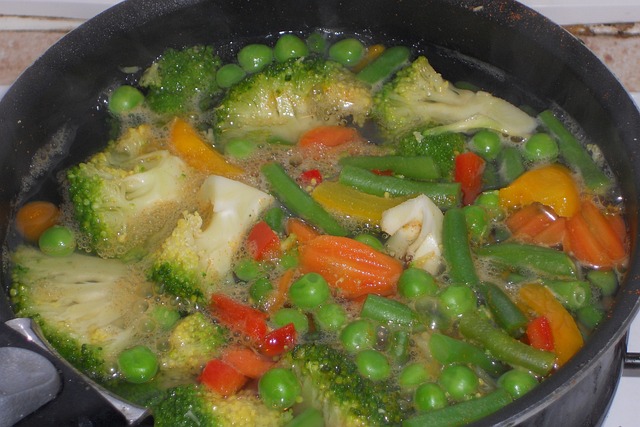
Water In The Morning
Do you know the saying “Work Smarter, Not Harder“?
This is great example of how changing something as simple as the timing of your watering can make a big difference to the effectiveness.
Watering your borders in the morning when it is reasonably cool will allow the water to sink in and set the plants up for the day.
Containers should similarly be watered early in the morning and if it is a very dry day and the container is very small, possibly again in the afternoon.
It is best not to water during the main sunny / hot period of the day as this can scorch the plant.
It is also best not to water late in the evening as this will create overly damp conditions through the night which can encourage mould and fungus growth.
Check The Weather Forecast
You can save yourself the trouble of watering entirely by using natural rainfall, and this will prevent plants receiving double the amount of water they need.
If you are forecast rain then you can skip the morning watering, just don’t forget to water the greenhouse or any sheltered areas that don’t get much rain.
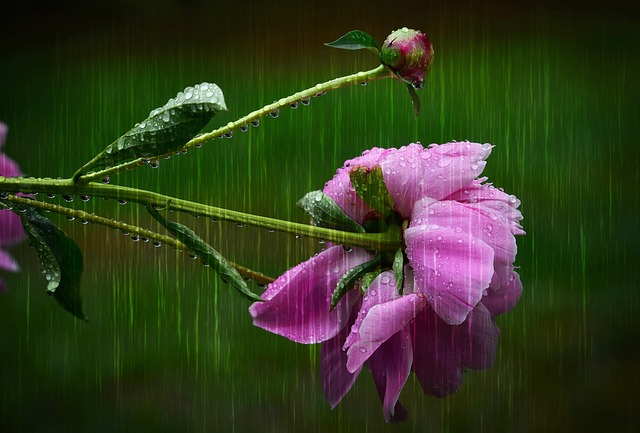
Mulch
Mulching is a great way to increase the water content of the soil, along with adding rich nutrients.
Mulch is simply plant matter that has fallen to the ground and decomposed, so homemade compost is an excellent material to use.
In my garden we use fallen leaves and apples that have been composted for a couple of months, along with grass cuttings and other garden waste.
You can also use cardboard, coffee grounds, wood chippings, and rotted manure.
The Best Way To Apply Mulch
- The best times to apply mulch are in the spring and in the winter.
- Mulching in the spring will suppress weeds and provide growing plants with a boost of nutrients and moisture.
- Mulching in the winter will protect plants and soils from cold temperatures, frost and wind erosion.
- Mulch does not need to be dug in, you are just adding a layer of about 7cm on the top of the soil.
- Leave a space around stems and woody trunks to prevent fungus and maintain airflow.
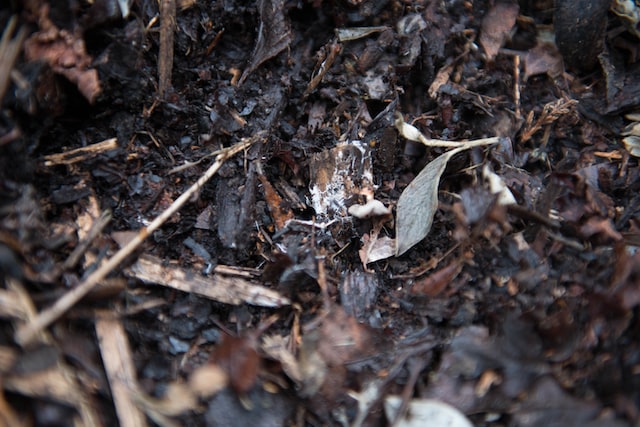
Grow Your Lawn
While a lawn does need to be maintained to a reasonably neat height, if you cut it too short, it will have no protection from the heat of the day and will dry out.
Generally a height of 3cm to 5cm is good.
If the weather is hot and dry then allow the lawn to grow a bit longer – perhaps 6cm to 7cm.
This will increase moisture retention and keep it looking lusher and greener for longer.
Use Edging For Borders
A good way to keep water in your borders is to use edging.
This can stop it running off into the lawn, especially if your borders are raised.
You can use anything you have at hand.
In my garden we have used old bricks at an angle to create a triangular effect.
You could use slate, pebbles, wood – or you can buy specially manufactured edging in a variety of styles and materials.
This also creates a clear and neat boundary between lawn and border which can look very attractive.
Don’t Use A Sprinkler
When the weather is warm and you have a large surface area to water, it can be very tempting to get the sprinkler out and leave it on for a while.
This uses a large amount of water however, and much of it goes where it is not needed – over the fence, on top of bushes, and onto paths and paving.
In fact, many plants can be susceptible to sun scorch when water is splashed onto the leaves from above and left to sit there.
It can also cause mould growth in warm conditions.
It is far better to water with a targeted approach.
Use a watering can without the rainhead and water deeply at the roots, taking care not to splash the leaves.
This way you can be sure water is only going where it is needed, and not next door!
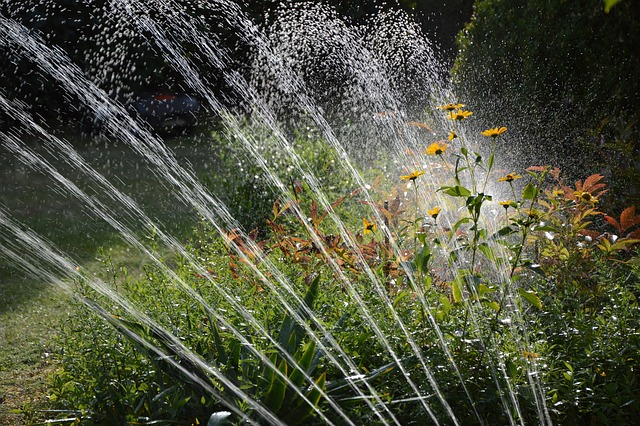
Use Vermiculite Or Perlite In Containers
Containers tend to dry out more quickly than normal ground soil, so mixing the soil with either of these two products is a good way to slow the process.
They are quite similar in that they both absorb water and then release it slowly.
They are slightly different in that Vermiculite will absorb more water, and so is better for plants that like to stay a little damp.
Perlite absorbs slightly less water than Vermiculite but is better for aerating the soil, and is therefore a good choice for plants that like to dry out a little, like succulents or cacti.
This can be very useful when creating succulent hanging baskets, wreaths or picture frames.
Final Thoughts
We all need to do our bit to conserve water, now and increasingly in the future.
This will also save money on water bills!
We have looked at some great ways to achieve this in your garden or yard, hopefully this article will help anyone wanting to cut down their water consumption but keep their Garden Heaven looking lush and green.

